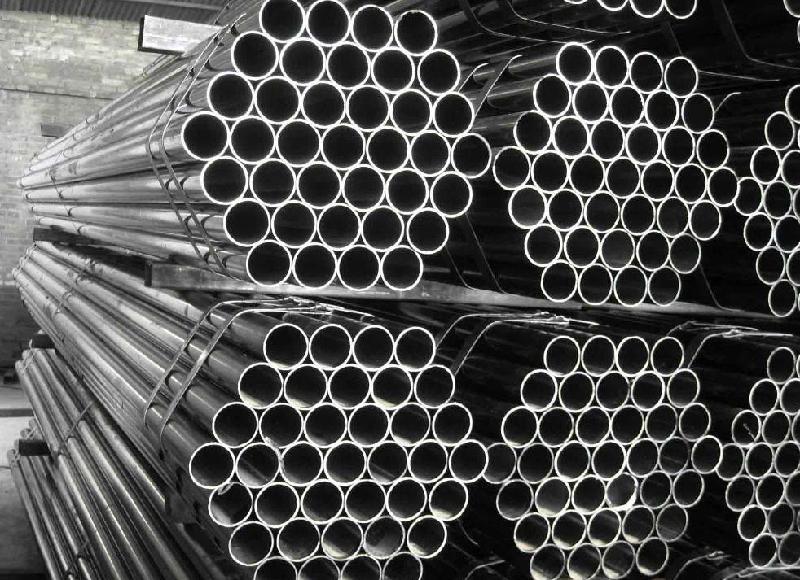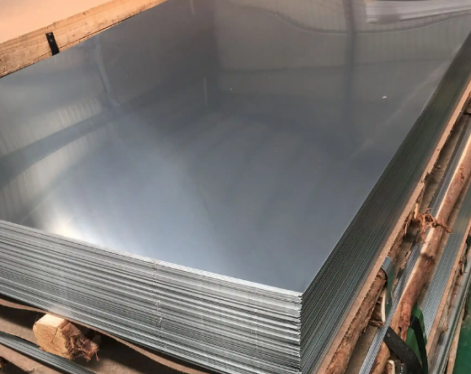Carbon structural steel pipe is a seamless pipe that does not contain other alloying elements except for carbon (C) elements and a certain amount of silicon (Si) (generally not exceeding 0.40%) and manganese (Mn) alloying elements for deoxidation. Such steels must guarantee both chemical composition and mechanical properties. The content of impurity elements such as sulfur (S) and phosphorus (P) is generally controlled below 0.035%.
Structural seamless pipe pickling
In addition to stripping the iron oxide scale during pickling, hydrogen also diffuses into the carbon structural steel pipe matrix and gathers at impurities or pores. It leads to an increase in internal stress, reduces the plasticity of carbon structural steel pipes, and increases the brittleness of carbon structural steel pipes. This effect is called hydrogen embrittlement. Hydrogen embrittlement is mainly affected by the diffusion rate of hydrogen atoms. The diffusion rate of hydrogen is related to the following factors:
1. The diffusion rate of hydrogen in sulfuric acid solution is higher than that in hydrochloric acid solution.
2. With the increase of pickling temperature, the diffusion rate of hydrogen increases sharply, but increases the concentration of acid solution, and the diffusion rate of hydrogen does not increase much. Therefore, it is best not to pickle at low concentration and high temperature.
3. Certain inclusions in pickling such as arsenic (As), antimony (Sb), hydrogen sulfide (H2S) and sulfur dioxide (SO2) increase the diffusion rate of hydrogen atoms, that is, increase the possibility of hydrogen embrittlement.
The chemical composition of 4.15CrMo alloy steel pipe also affects the diffusion of hydrogen atoms. The measures to prevent hydrogen embrittlement are to operate according to the specified acid concentration and temperature, shorten the pickling time as much as possible, and add corrosion inhibitors on time and in quantity.

Pickling Defects
1. Under pickling. After pickling, there are still iron oxide scales that have not been removed on the surface of the carbon steel seamless pipe. This phenomenon is called under-pickling. Under-pickling can be divided into total under-pickling and partial under-pickling according to different causes. The reason for all under-pickling is short pickling time, low acid concentration or low temperature; the reason for partial under-pickling is that there is no horn added during coding or there is oil on the surface of the carbon structure seamless pipe. Under pickling can be rescued by continuing pickling.
2. Pickling. When carbon steel is pickled, the surface is rough and dark; when chrome stainless steel is pickled, the surface is gray and extremely rough, and there are circular holes with a certain depth - pinholes in severe cases. The reason for over pickling is that the temperature of the acid solution is too high, the pickling time is too long or the concentration of the acid solution is too high. Once this kind of defect occurs, it cannot be rescued, and it will have a harmful effect on the performance of the carbon structural seamless pipe. The pickled carbon structural seamless pipe is easy to stick to the roll or break during the rolling process.
3. Residue or rust. After pickling, in addition to the iron salt remaining on the surface of the carbon steel seamless pipe, there is also a layer of residue composed of oxides or salts of other elements in the pipe. These residues are unfavorable to the cleaning of the surface defects of the steel billet. If they are not washed off in time, the surface of the billet will continue to rust and appear yellow.
Structural seamless pipe pickling
In addition to stripping the iron oxide scale during pickling, hydrogen also diffuses into the carbon structural steel pipe matrix and gathers at impurities or pores. It leads to an increase in internal stress, reduces the plasticity of carbon structural steel pipes, and increases the brittleness of carbon structural steel pipes. This effect is called hydrogen embrittlement. Hydrogen embrittlement is mainly affected by the diffusion rate of hydrogen atoms. The diffusion rate of hydrogen is related to the following factors:
1. The diffusion rate of hydrogen in sulfuric acid solution is higher than that in hydrochloric acid solution.
2. With the increase of pickling temperature, the diffusion rate of hydrogen increases sharply, but increases the concentration of acid solution, and the diffusion rate of hydrogen does not increase much. Therefore, it is best not to pickle at low concentration and high temperature.
3. Certain inclusions in pickling such as arsenic (As), antimony (Sb), hydrogen sulfide (H2S) and sulfur dioxide (SO2) increase the diffusion rate of hydrogen atoms, that is, increase the possibility of hydrogen embrittlement.
The chemical composition of 4.15CrMo alloy steel pipe also affects the diffusion of hydrogen atoms. The measures to prevent hydrogen embrittlement are to operate according to the specified acid concentration and temperature, shorten the pickling time as much as possible, and add corrosion inhibitors on time and in quantity.

Pickling Defects
1. Under pickling. After pickling, there are still iron oxide scales that have not been removed on the surface of the carbon steel seamless pipe. This phenomenon is called under-pickling. Under-pickling can be divided into total under-pickling and partial under-pickling according to different causes. The reason for all under-pickling is short pickling time, low acid concentration or low temperature; the reason for partial under-pickling is that there is no horn added during coding or there is oil on the surface of the carbon structure seamless pipe. Under pickling can be rescued by continuing pickling.
2. Pickling. When carbon steel is pickled, the surface is rough and dark; when chrome stainless steel is pickled, the surface is gray and extremely rough, and there are circular holes with a certain depth - pinholes in severe cases. The reason for over pickling is that the temperature of the acid solution is too high, the pickling time is too long or the concentration of the acid solution is too high. Once this kind of defect occurs, it cannot be rescued, and it will have a harmful effect on the performance of the carbon structural seamless pipe. The pickled carbon structural seamless pipe is easy to stick to the roll or break during the rolling process.
3. Residue or rust. After pickling, in addition to the iron salt remaining on the surface of the carbon steel seamless pipe, there is also a layer of residue composed of oxides or salts of other elements in the pipe. These residues are unfavorable to the cleaning of the surface defects of the steel billet. If they are not washed off in time, the surface of the billet will continue to rust and appear yellow.









